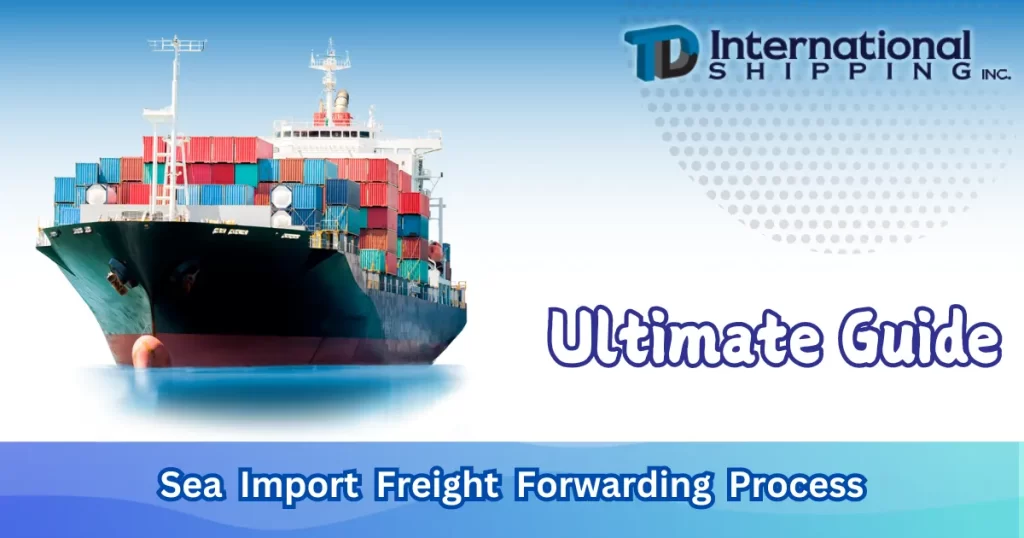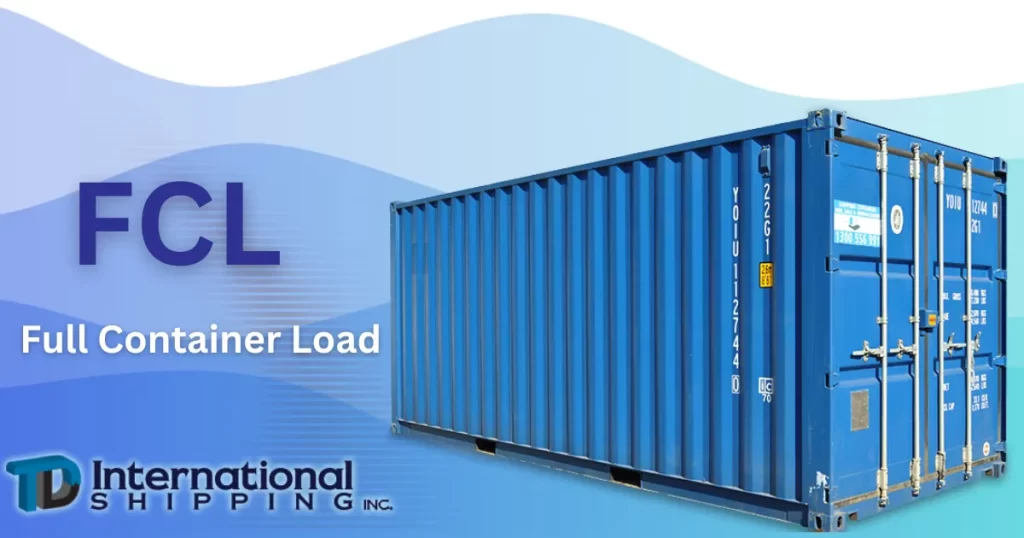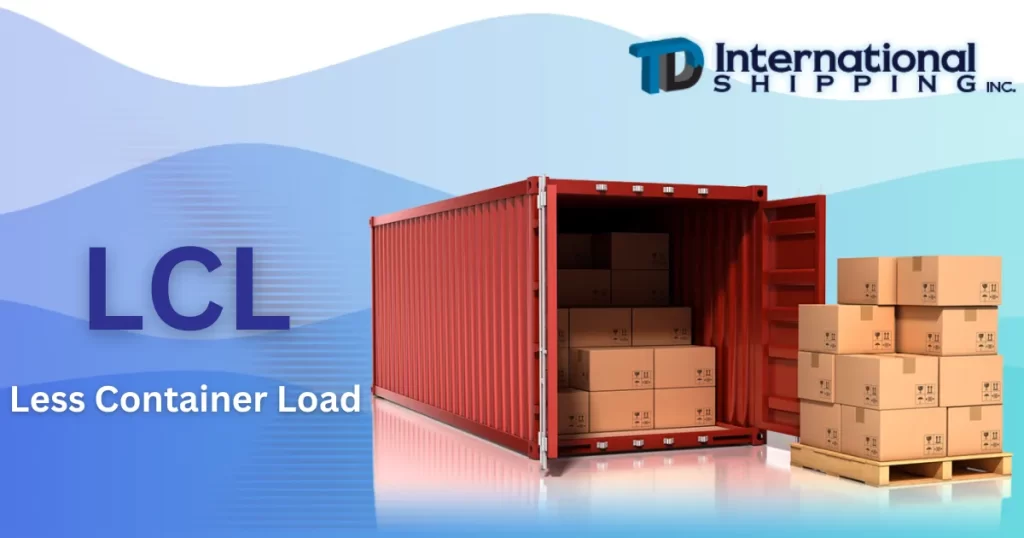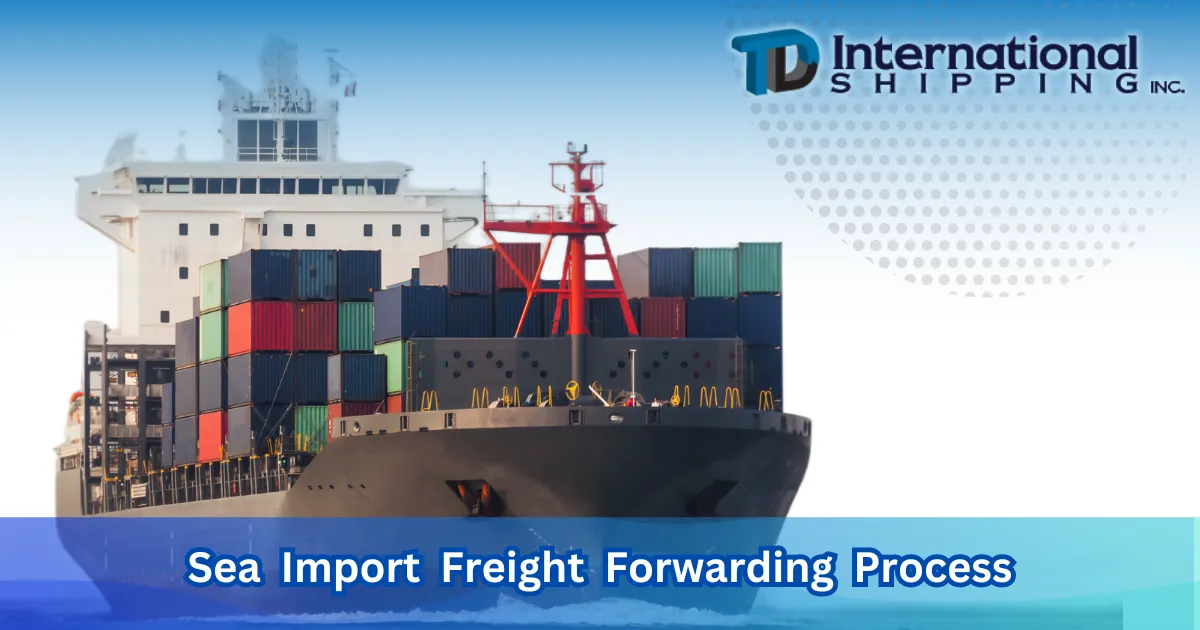The ocean freight forwarding process is a crucial aspect of global trade, ensuring that goods move efficiently across borders and oceans. Whether you’re a seasoned importer or new to international shipping, understanding this process is essential for avoiding costly mistakes and delays.
So, how does the sea import process work? In this guide, we’ll break it down step by step and explore everything you need to know.

What is the Ocean Freight Forwarding Process?
Ocean Freight forwarding is the coordination and shipment of goods from one place to another, usually internationally. The process involves a series of steps that include documentation, customs clearance, and managing transportation routes.
Essentially, a sea freight forwarder acts as a middleman between the shipper and various transport services like ocean carriers and customs brokers. Without Ocean freight forwarding, international trade would be much more complex and expensive.
Types Of Ocean Freight Forwarding Services
When it comes to ocean freight forwarding process, businesses have different options depending on the volume and urgency of the goods. Two of the most common types are Full Container Load (FCL) and Less than Container Load (LCL).
-
Full Container Load (FCL): This is ideal for businesses that have enough goods to fill an entire container. It offers greater security and often faster transit times since the container only holds your shipment.

-
Less than Container Load (LCL): If your shipment doesn’t fill a whole container, you can share space with other goods. While more affordable, LCL can take longer and may have more handling, which increases the risk of damage.

Advantages Of Ocean Freight forwarding
Choosing ocean freight forwarding has many advantages, especially when importing large quantities of goods. First, it’s one of the most cost-effective transportation methods for bulk shipments.
Ocean freight also offers flexibility in shipping large, heavy items that may not be feasible for air freight. Another advantage is the environmentally friendly nature of ocean transport, as it produces fewer carbon emissions compared to air freight.
What is the Principle of Freight Forwarding?
The sea import freight forwarding process is based on several core principles that ensure goods are transported efficiently across international borders. These principles are vital for businesses engaged in global trade, particularly when navigating complex shipping logistics. Here’s a breakdown of the key principles of ocean freight forwarding:
-
Coordination of Multiple Transport Modes: Freight forwarders organize the movement of goods across different transportation modes—such as ships, trucks, and trains—ensuring a seamless flow from origin to destination.
-
Efficient Documentation Management: One critical element of the freight forwarding process is managing essential documents like bills of lading, commercial invoices, and customs declarations. Timely and accurate documentation prevents delays and ensures smooth customs clearance.
-
Customs Clearance Expertise: Freight forwarders are well-versed in customs regulations and act as intermediaries between the shipper and customs authorities. They make sure the goods comply with import/export regulations and handle any required duties or taxes.
-
Cargo Tracking and Monitoring: Throughout the sea import freight forwarding process, freight forwarders use tracking systems to monitor shipments in real-time, ensuring the timely and secure delivery of goods.
-
Negotiating Freight Rates: Leveraging their industry relationships, freight forwarders negotiate competitive shipping rates with carriers, allowing businesses to save on transportation costs.
-
Risk Management and Insurance: Freight forwarders assess risks during transit and offer insurance options to protect shipments from unforeseen circumstances like damage or loss.
-
Optimized Logistics Solutions: Freight forwarders create customized logistics plans tailored to the specific needs of the business, minimizing costs while maximizing efficiency. This is often mapped out using a freight forwarding process flowchart for better visualization and planning.
These principles form the backbone of the Ocean Transportation Service process, helping businesses move goods smoothly and cost-effectively across international waters.
How Do Freight Forwarders Assist in the Ocean Freight Forwarding Process?
Freight forwarders simplify the entire sea import freight forwarding process by taking care of all the complicated details on your behalf. They handle the coordination of transportation, prepare the necessary documentation, and ensure the goods comply with customs regulations.
This includes managing the Ocean Freight forwarding documentation process, which is critical for smooth customs clearance and avoiding delays. Freight forwarders also negotiate rates and help you find the most efficient shipping routes.
What Are the Steps in the Sea Import Freight Forwarding Process?
The sea import freight forwarding process involves several critical stages. Here is a detailed, step-by-step guide to help you understand each part of the journey your goods will take:
-
Shipment Booking
- The freight forwarder evaluates your shipping requirements.
- They identify the best vessel and route based on your delivery timeline and budget.
- Space is booked on a vessel, and the booking confirmation is received.
- The shipping date is scheduled, and arrangements are made with the shipping line.
-
Documentation Preparation
- The forwarder gathers all necessary paperwork, including:
- Bill of Lading (BOL): A legal document issued by the carrier to acknowledge receipt of cargo.
- Commercial Invoice: A document detailing the goods being shipped and their value.
- Packing List: A list outlining the contents of the shipment.
- Additional documentation might include:
- Certificates of origin (if required by customs).
- Import permits and licenses.
- Insurance documentation for the shipment.
- Freight forwarders ensure that the freight forwarding documentation process is completed accurately and on time to keep the sea import freight forwarding process running smoothly.
- The forwarder gathers all necessary paperwork, including:
-
Customs Clearance at Origin
- The shipment is presented for export customs clearance.
- Duties, taxes, or tariffs applicable in the origin country are calculated and paid.
- Customs officers review the documentation to ensure compliance with regulations.
- Clearance is granted, and the goods are allowed to be exported, which is essential to continue the sea import freight forwarding process without delays.
-
Loading and Departure
- Once cleared, the goods are loaded onto the vessel at the port of origin.
- Containers are securely packed, inspected, and sealed.
- The ship departs from the port, and the forwarder provides an estimated time of arrival (ETA).
- All shipping details, including container numbers and vessel information, are communicated to the client as part of the overall sea import freight forwarding process.
-
In-Transit Updates
- The forwarder tracks the progress of the vessel as it crosses the ocean.
- Periodic updates are provided, especially in the event of delays or changes in the shipping schedule.
- Clients are kept informed of the ship’s position and ETA at the destination port.
-
Arrival at Destination Port
- Upon arrival at the destination port, the goods must clear import customs.
- The forwarder liaises with customs brokers to ensure all documents are submitted on time.
- Import duties, taxes, and tariffs are calculated and paid at the port of entry.
- Once customs clearance is granted, the shipment is released for further processing, allowing the sea import freight forwarding process to move toward completion.
-
Unloading and Port Handling
- The goods are unloaded from the vessel.
- Containers are inspected for damage and checked for compliance with the shipping documentation.
- Port handling charges, such as unloading fees, are paid to the port authorities.
-
Customs Clearance at Destination
- The forwarder ensures all documentation is submitted for final customs clearance.
- Any discrepancies or issues are resolved promptly with customs officials.
- Import duties are settled, and the goods are cleared for delivery to their final destination, wrapping up a key part of the sea import freight forwarding process.
-
Transportation to Final Destination
- After clearing customs, the goods are transferred from the port to the final destination.
- This could involve road or rail transport, depending on the location.
- The forwarder arranges delivery according to the client’s requirements.
- The freight forwarder ensures that all final transportation arrangements are completed on time.
-
Delivery Confirmation
- The goods are delivered to the designated recipient.
- A proof of delivery (POD) document is signed by the recipient to confirm receipt.
- The forwarder closes the shipment process by providing all relevant documentation to the client, marking the successful completion of the sea import freight forwarding process.
This Ocean freight forwarding process step by step ensures a seamless flow of goods from one country to another.
Challenges In Ocean Freight Forwarding
Despite its benefits, ocean freight forwarding has its challenges. Some common issues include delays due to port congestion, unexpected customs hold-ups, and changing weather conditions.
Additionally, fluctuating fuel prices can affect shipping costs. Having a reliable freight forwarder can mitigate many of these issues by planning ahead and addressing any problems that arise.
How Are Ocean Freight Rates Determined?
Ocean freight rates depend on several factors, including the size and weight of the shipment, the distance between ports, and the type of service (FCL or LCL).
Other variables include fuel prices, port fees, and any applicable tariffs or duties. Freight forwarders use their network to negotiate competitive rates and find the most cost-effective routes for your shipment.
Shipping Industry Trends in 2024: Challenges and Opportunities
Here’s a summary of what to include under this heading:
- Geopolitical Tensions: Discuss how conflicts like those in the Red Sea and shifting trade alliances (such as Mexico’s growing role in US trade) are impacting global shipping routes.
- Capacity and Rates: Explain the current surplus in shipping capacity, how it is driving down rates, and what it means for businesses reliant on ocean freight.
- Sustainability and Decarbonization: Cover the increasing pressure to reduce CO2 emissions, the 2050 Net Zero goals, and the significant investments required to meet those targets.
- Impact of Climate Change: Highlight how extreme weather, especially with the 2024 El Niño and low water levels in the Panama Canal, is disrupting shipping lanes and forcing shifts in global cargo flows.
What Is the Best Freight Forwarder Company in Florida?
If you’re looking for a trusted partner to handle your sea import needs, TD International Shipping INC. is one of the best freight forwarder companies in Florida.
We specialize in providing personalized solutions and Professional Ocean Freight Services tailored to your business’s needs. Our extensive experience and strong relationships with carriers allow us to offer competitive rates and reliable service.
Feel free to contact us today by +1 (917) 214-6899 phone or via Whatsapp
Additional Services Provided by TD International Shipping
TD International Shipping offers a wide range of services beyond basic transportation, catering to the diverse needs of its customers. As a leading freight forwarder, they specialize in handling shipments through various modes, including air, sea, and land. Their expertise in Air Freight Import and Export Procedures ensures that goods move efficiently across borders, providing a seamless experience for clients.
Read also: How to calculate air freight volume weight
Freight Forwarding and Supply Chain Management
In addition to transportation, TD International Shipping excels in supply chain management, offering services such as warehousing, inventory control, and customs clearance. Their global network and industry partnerships allow them to provide reliable, cost-effective solutions for businesses of all sizes. Whether customers need air, ocean, or land freight, TD International Shipping delivers top-notch service with efficiency and precision.
What Are the Benefits of the Freight Forwarding Process?
The Ocean freight forwarding process offers numerous benefits, including cost savings, streamlined logistics, and reduced risks. By using a freight forwarder, you can focus on other aspects of your business while leaving the complexities of international shipping in expert hands.
Additionally, freight forwarders often have better access to global networks, which can result in faster transit times and lower shipping costs.
Case Study:
TD International Shipping INC., a prominent freight forwarding company based in Florida, recently embarked on an ambitious project to import a shipment of heavy machinery from China. This case study showcases how they tackled the intricate sea import freight forwarding process, turning challenges into opportunities for innovation and efficiency.
Objective
The primary objective was to ensure the machinery arrived safely and on time at the client’s site in the U.S. Given the significant investment in the equipment, any delays could result in costly downtime for the client’s operations. Thus, the stakes were high for this project.
Challenges Faced in Sea Import Freight Forwarding Process
-
Complex Documentation: The shipment required extensive paperwork, including commercial invoices, certificates of origin, and specific import permits. Errors in documentation could lead to severe delays or customs penalties.
-
Navigating Customs Regulations: Each country has unique import requirements. In this case, ensuring compliance with U.S. customs laws, particularly with heavy machinery, added an extra layer of complexity.
-
Weather-Related Disruptions: As 2024 brought extreme weather patterns and geopolitical tensions, key shipping routes like the Panama Canal faced delays. These disruptions posed a risk to timely delivery.
-
Cost Fluctuations: The ocean freight rates were volatile due to increased shipping capacity and fluctuating demand, complicating budget planning for the import.
Innovative Solutions Implemented
To overcome these challenges, TD International Shipping INC. adopted several strategic measures:
-
Freight Forwarding Process Flowchart: They developed a detailed flowchart outlining every step of the import process, from initial planning to final delivery. This visual tool enabled the team to track progress and identify potential bottlenecks quickly.
-
Pre-shipment Coordination: TD’s team coordinated with Chinese suppliers well in advance to ensure all documentation was accurate and submitted ahead of schedule, preventing any last-minute surprises.
-
Dynamic Routing Strategy: Aware of potential weather disruptions, the logistics team evaluated alternative shipping routes. By opting for a route that bypassed the congested Panama Canal, they ensured smoother transit and maintained timelines.
-
Real-time Communication and Tracking: Utilizing advanced tracking technology, the client received real-time updates about the shipment’s status. This transparency fostered trust and allowed for immediate adjustments when needed.
Exciting Results
The efforts paid off in unexpected ways:
-
On-time Arrival: The machinery arrived at the destination port exactly as scheduled, even with the anticipated delays. This not only pleased the client but also reinforced TD International Shipping INC.’s reputation for reliability.
-
Cost Savings: By securing competitive shipping rates through timely negotiations and avoiding penalties, the company saved an impressive 15% on total freight costs. These savings were reinvested into enhancing service offerings.
-
Seamless Customs Clearance: Thanks to meticulous documentation and proactive communication with customs brokers, the cargo passed through customs without a hitch, allowing for immediate transportation to the client’s site.
Key Takeaways
-
Thorough Planning is Crucial: The case underscores the importance of detailed pre-shipment planning and documentation. Success hinges on getting the paperwork right.
-
Flexibility in Logistics: Being able to adapt to changing circumstances—like route adjustments due to weather—can make all the difference in meeting deadlines.
-
Client Communication: Providing clients with real-time updates creates a collaborative atmosphere that builds trust and fosters long-term relationships.
-
Continuous Improvement: Each successful shipment enhances the company’s expertise, allowing for better handling of future projects.
Conclusion
TD International Shipping INC.’s case study illustrates how mastering the sea import freight forwarding process can lead to not just meeting, but exceeding client expectations. With strategic planning, innovative solutions, and a commitment to excellence, they turned challenges into opportunities for growth and success.
FAQs
-
What documents are needed for sea import freight forwarding? Essential documents include the bill of lading, commercial invoice, and packing list.
-
How long does the sea import process take? It depends on the shipping route, but most ocean shipments take between 20 and 40 days.
-
Can I track my shipment during transit? Yes, most freight forwarders provide tracking updates while your shipment is in transit.
-
What is the difference between FCL and LCL? FCL is for full container loads, while LCL is for shipments that share container space with other goods.
-
Why should I choose TD International Shipping INC.? TD International Shipping INC. offers personalized, reliable freight forwarding services with competitive rates tailored to your business.


